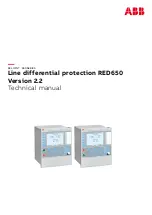
STEP 3
Select a location
for the Surge Protection Device (SPD) which will allow con-
venient connection to the panel while keeping the lead wires as short as pos-
sible. Use an AC voltmeter or circuit tester across two breaker outputs to con-
firm that there is 240 volts between them. If the voltage is 0, select a different
breaker or pair of breakers and retest for the presence of 240 volts. A two-pole
or two single-pole breakers of no larger than 20 amp capacity should be used.
STEP 4
Select a mounting position
for the protector at the electric panel. If you have
a panel that is not similar to the diagram in Figure 2, call Intermatic for assis-
tance at the numbers listed at the end of these instructions between the hours
of 8:00 am and 4:00 pm central time Monday through Friday.
Note
: Operation of the IG1300 Series will be optimized by keeping the wire
lead lengths as short and balanced as possible. It is better to use two break-
ers near the bottom of the electrical panel with short wire leads than to use
two breakers at the top of the panel with long wire leads.
STEP 5
Prepare the protector
for installation. Open the cover of the NEMA 3R cabi-
net and remove the screws from holes A and B using a Torx T-20 screwdriver
or bit.
STEP 6
Lift the telephone and coaxial protection module assembly
out of the cab-
inet and place it to one side for future use. Straighten the four 14 AWG wires
and let them hang.
Figure 1
Torx T-20
in Hole A
Torx T-20
in Hole C
Hole D
Hole F
Torx T-20 in
Hole B
(hole E
located under wire
channel cover
AC Voltage
Protection Device
Mounting Plate
4-wire Telephone
protection modules
Coaxial Cable
protection module
Mounting Screw
Hole
(second hole
located under wire
channel cover)
Mounting Screw
Keyhole
2
Wire Channel
Cover



















